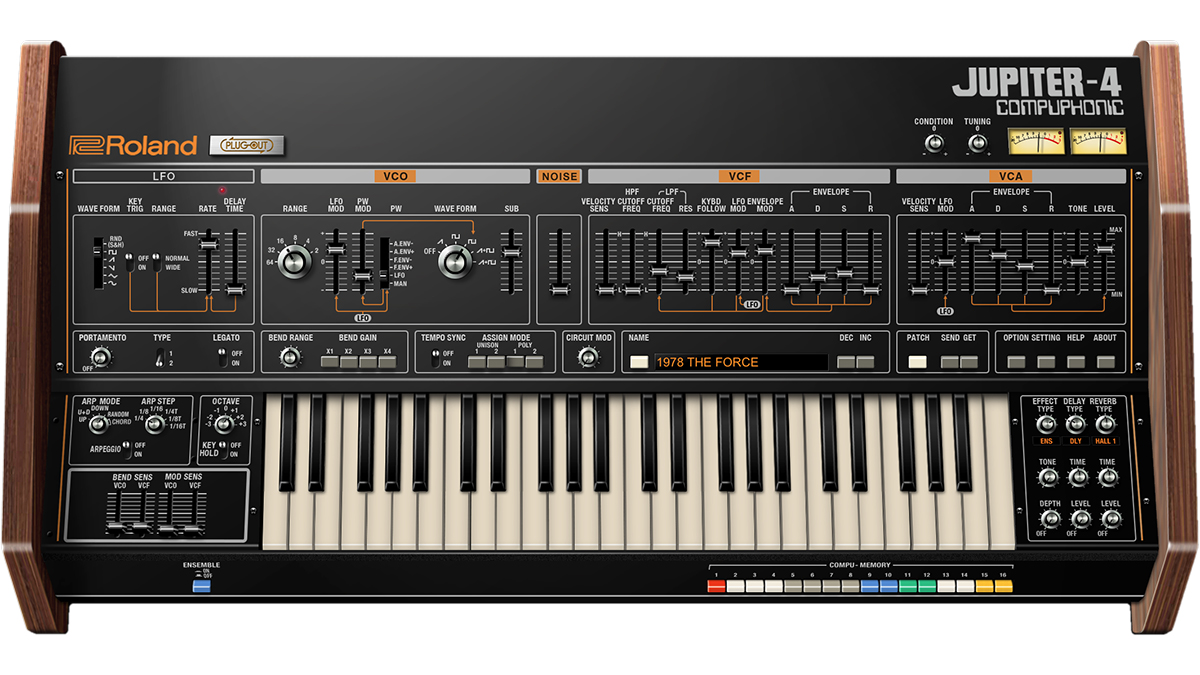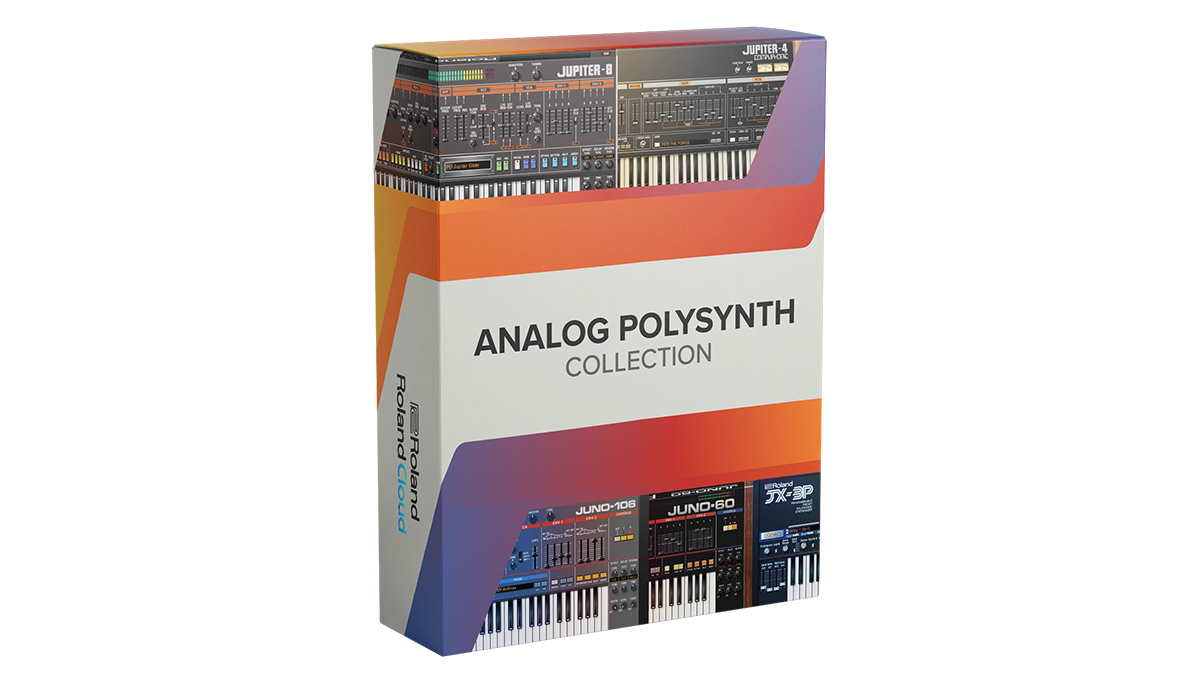New Jupiter-4 plugin brings more solar system synth power to the Roland Cloud
It’s also available as a Plug-Out for the System-8 keyboard

Released in 1978, the Jupiter-4 was the first Roland synth to bear the gigantic gas giant’s name - in fact, it was the company’s first polyphonic synth. Now it’s arrived as a plugin on the Roland Cloud, and is also being made available as a Plug-Out for the System-8 keyboard.
Famed for its fat, warm sound and straightforward front panel, the Jupiter-4 offered a single VCO, a filter, an LFO section and more. Roland has modelled all of these features using its ACB (Analog Circuit Behaviour) technology, which promises to emulate not only each individual element, but also the way they interact with each other.
In addition, you get new Circuit Mod and Condition controls that enable you to adjust the character of the sound to suit your taste.
Other modern enhancements include extended oscillator range, adjustable noise, velocity sensitivity, sub-oscillator volume control and an arpeggiator. Phaser, flanger, overdrive, reverb and delay effects join the classic Ensemble chorus from the Jupiter-4, too.
The Jupiter-4 plugin is available for PC and Mac in VST/AU/AAX formats. The Plug-Out functionality, meanwhile, means that you can upload the synth to your System-8 keyboard and use it away from your computer.
The Jupiter-4 plugin is part of Roland’s Legendary series and can be accessed by Pro ($99/year) and Ultimate ($199/year) subscribers to its Roland Cloud service. Pro subscribers get access to two Legendary titles, while Ultimate subscribers get full access to all titles.
It’s also included in the Analog Polysynth Collection, a new Legendary series bundle that also features ‘lifetime keys’ for the Jupiter-8, Juno-60, JX-3P and Juno-106 plugins.
Want all the hottest music and gear news, reviews, deals, features and more, direct to your inbox? Sign up here.
Find out more on the Roland website.




I’m the Deputy Editor of MusicRadar, having worked on the site since its launch in 2007. I previously spent eight years working on our sister magazine, Computer Music. I’ve been playing the piano, gigging in bands and failing to finish tracks at home for more than 30 years, 24 of which I’ve also spent writing about music and the ever-changing technology used to make it.